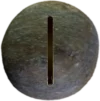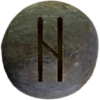Last Updated on June 16, 2025
Table of Contents


Mythology and Symbolism
The Jötunn (pronounced “YUR-tun” or “YO-tun”; plural form: Jötnar, pronounced “Yo-tnar”), often called giants, are primal beings in Norse mythology. Their name translates roughly to “devourer” or “eater,” reflecting their chaotic and untamed nature. The Jötnar appear in numerous myths, embodying forces of nature, chaos, and opposition to the Æsir and Vanir gods. Their origins trace back to Ymir (“EE-meer”), the first being, who emerged from the void of Ginnungagap. ![]()
The Poetic Edda and Prose Edda frequently depict the Jötnar as complex entities. They are not solely adversaries to the gods; they also contribute to the cosmic balance. For example, the gods created the world from Ymir’s body after his death. This act demonstrates the interconnectedness between creation and destruction. Some Jötnar form alliances or romantic relationships with the gods, blurring the line between friend and foe. Loki, often considered a Jötunn, is an example of this duality.
The Jötnar inhabit Jötunheimr (“YO-tun-haym-er”), one of the Nine Worlds, located far from the ordered realms of the gods. Jötunheimr symbolizes untamed wilderness and raw power. The Jötnar control elements like ice, fire, and storms, reflecting their link to natural forces. For instance, Hrungnir (“HRUNG-neer”) represents destructive storms, while Skadi (“SKAH-dee”), a mountain Jötunn, personifies winter and hunting.
The myths portray Jötnar as both threats and essential components of the cosmos. Ragnarök, the end-of-days event, highlights this dynamic. The Jötnar lead the charge against the gods, representing chaos overpowering order. However, their role ensures the renewal of the world. The Jötnar remind us of the necessity of balance and the ever-present tension between creation and destruction.
Runes Associated with the Jötunn
The Thurisaz rune (ᚦ) (“THOO-ree-saz”), embodies the Jötnar’s raw power and chaotic energy. It represents both destruction and protection.
The Isaz rune (ᛁ), (“EE-saz”) symbolizes ice and stasis, aligning with the frost giants’ connection to frozen and unyielding forces.
These Elder Futhark runes capture the duality of the Jötnar’s nature, reflecting their destructive power and contribution to cosmic balance. ![]()
Their Importance to Asatru
To Asatruar, the Jötnar symbolize nature’s raw and untamed forces. They remind practitioners to respect both chaos and order. The Jötnar embody life’s challenges, pushing individuals to grow and adapt. They also represent the essential balance between opposing forces, teaching that harmony emerges through the interplay of destruction and creation.

